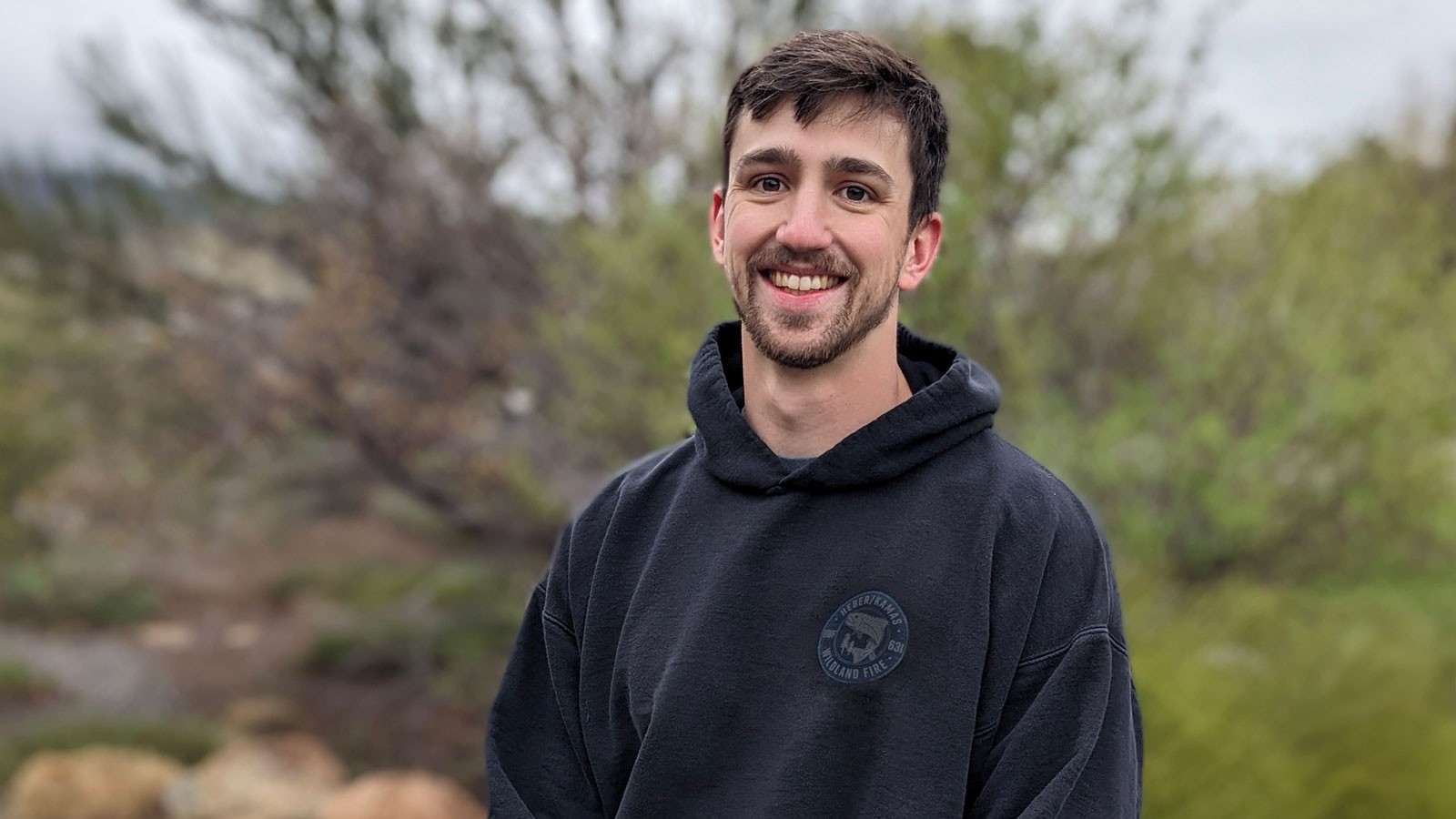Land and Sea: Jacob Lancaster on Building a Career in Wildland Firefighting
By Lael Gilbert |
Showing up to campus packing four-and-a-half years’ experience from the U.S. Coast Guard, Jacob Lancaster didn’t necessarily anticipate a “typical” undergraduate experience in the Quinney College of Natural Resources. But now, set to graduate with a degree in environmental studies, he thinks being “typical” is probably overrated.
“There isn’t one kind of person here that defines or dominates the community,” he said. “Students here tend to have pretty diverse life experiences, background and age range. People just take you as you are.”
Lancaster transferred into the college with fairly specific goals for building hands-on skills that he’d found during his stint in the coast guard. That experience gave him a taste for emergency management — high-octane communication and coordination work on radios and drones. Like many students emerging from the forced flexibility of pandemic years, he was ready to fully explore his options for career tracks.
He settled on a major that complemented and built the skills he’d launched during his time with the coast guard, and added a solid foundation in ecological principles and GIS (mapping) technology. He also found a way to further explore the capabilities of drones in a professional setting, earning a certificate in applied geographic information science and a minor in unmanned aerial systems.
Lancaster will next pursue a career with the U.S. Forest Service as a wildland firefighter, and his time in QCNR gave him ample opportunity to keep his drip-torch in working order. His coursework and participation in the student chapter of the Association for Fire Ecology (USU Fire Club), TERRA Geospatial Society and the USU Forestry Club offered a collection of boots-on-the-ground experiences that showed him how to pull together his diverse skill set into a solid career trajectory.
While some students headed to sunny beaches or sandstone trails for spring break, Lancaster chose a different kind of experience — traveling halfway across the country to the short-leaf pine forests of the Missouri Ozarks to set things on fire. The Fire Club participated in a prescribed fire restoration project on the privately owned Pioneer Forest near the Mark Twain National Forest in Missouri. The goal of the trip was to break out of theoretical learning in the field of fire and get hands-on experience on an actual project, he said.
“I really enjoyed that kind of hands-on work,” he said.
He found more of it in his courses — fitting drones with sensors, building them out, learning to collect data and use the mapping software, perfecting control by racing drones around Cache Valley. All a great fit for him, he said, because sitting at a desk tends to make him antsy. Not that everything always ran without a hitch. With drones, you learn by crashing, he jokes.
QCNR experts in geographical information, like Shannon Belmont and Doug Ramsey, modeled for him how to look deeper at the data he collected to see a bigger picture of the environments he’ll now be protecting.
“There was a lot of deep professional experience that I got to take advantage of,” he said. “Some of the GIS classes get pretty involved, but since you could work with whatever data set you wanted, I could pick whatever I was interested in knowing more about. I found that really interesting.”
Lancaster will now enter a two-year apprentice program with the U.S. Forest Service, learning the wildfire system top-to-bottom. He’ll head to Pagosa Springs, Colorado, to spend time on a helicopter, with a hand crew, on a response engine and with dispatch.
“I’ve never necessarily had a whole grand plan for my career … but having a clear idea of the next step is good enough,” he said.
WRITER
Lael Gilbert
Public Relations Specialist
Quinney College of Natural Resources
435-797-8455
lael.gilbert@usu.edu
TOPICS
Student Success 304stories Land Management 124storiesComments and questions regarding this article may be directed to the contact person listed on this page.







